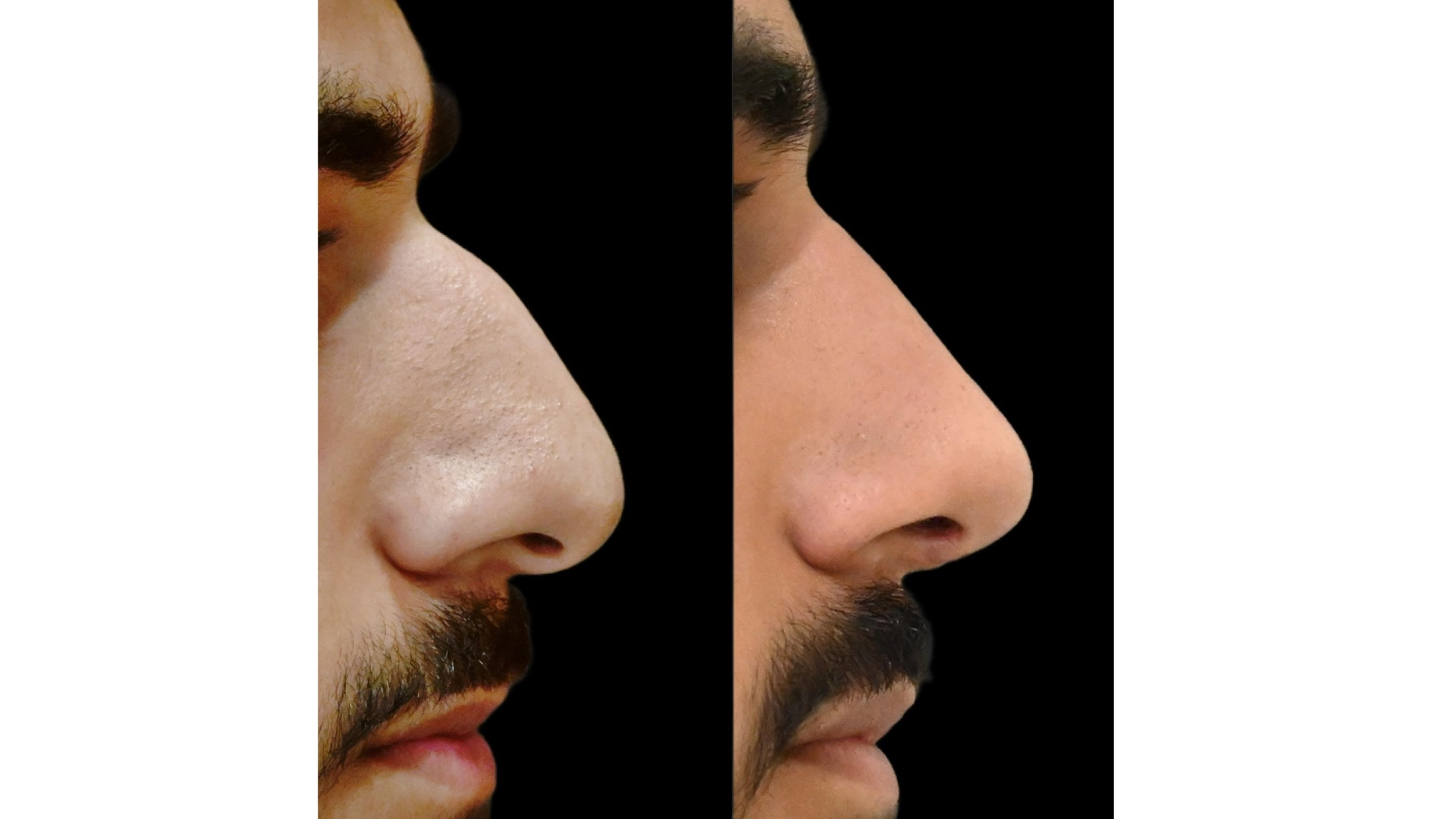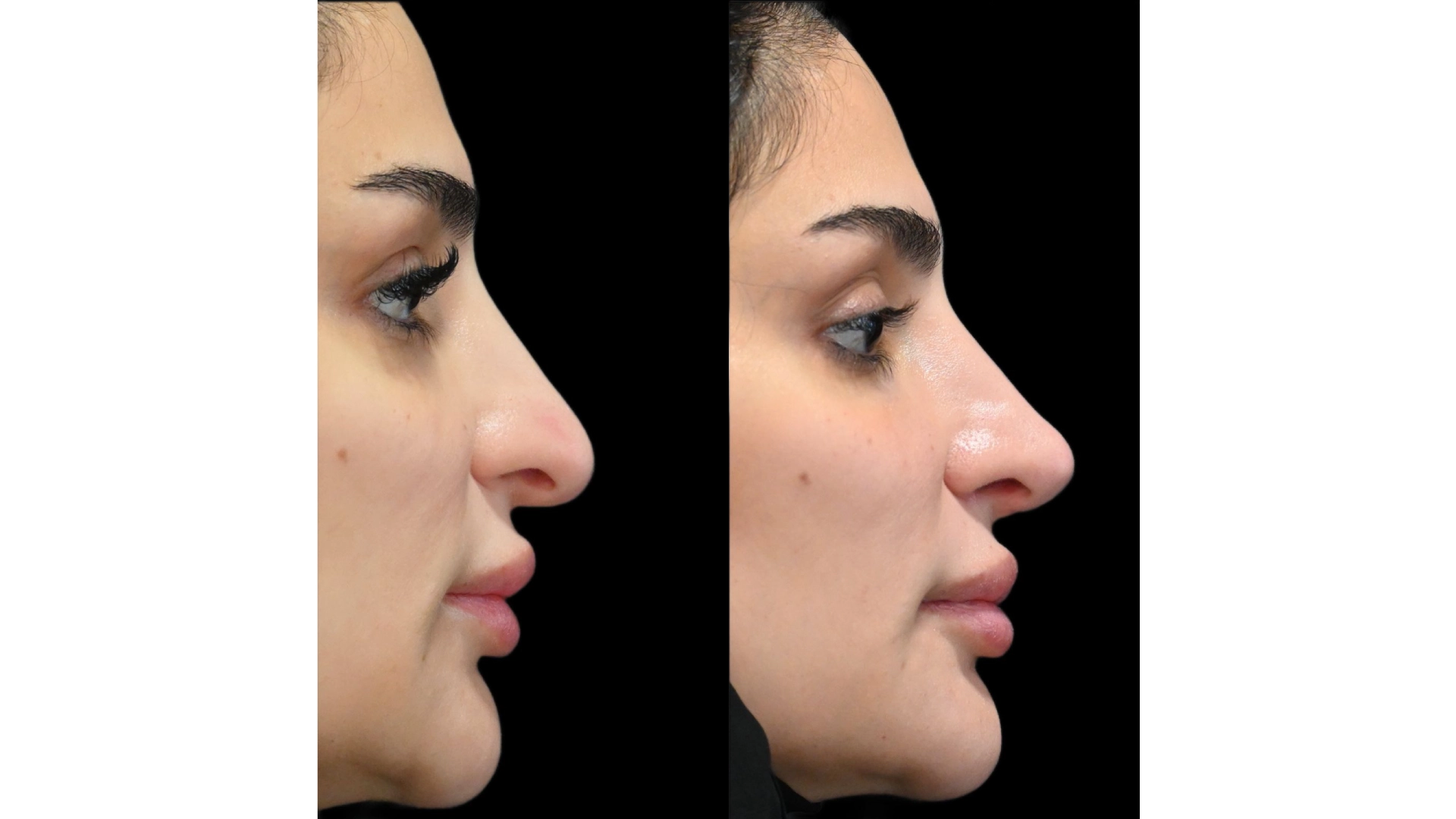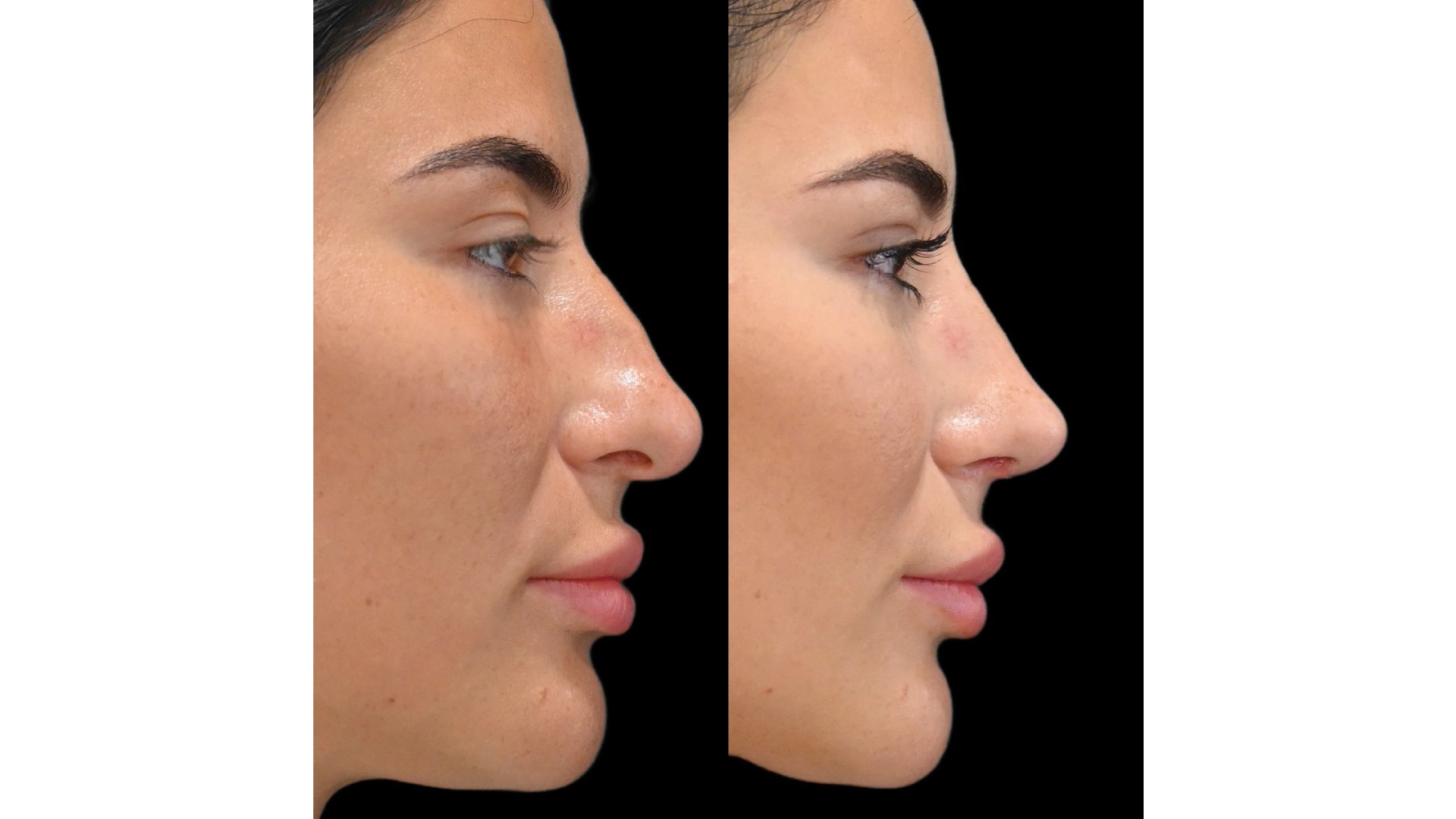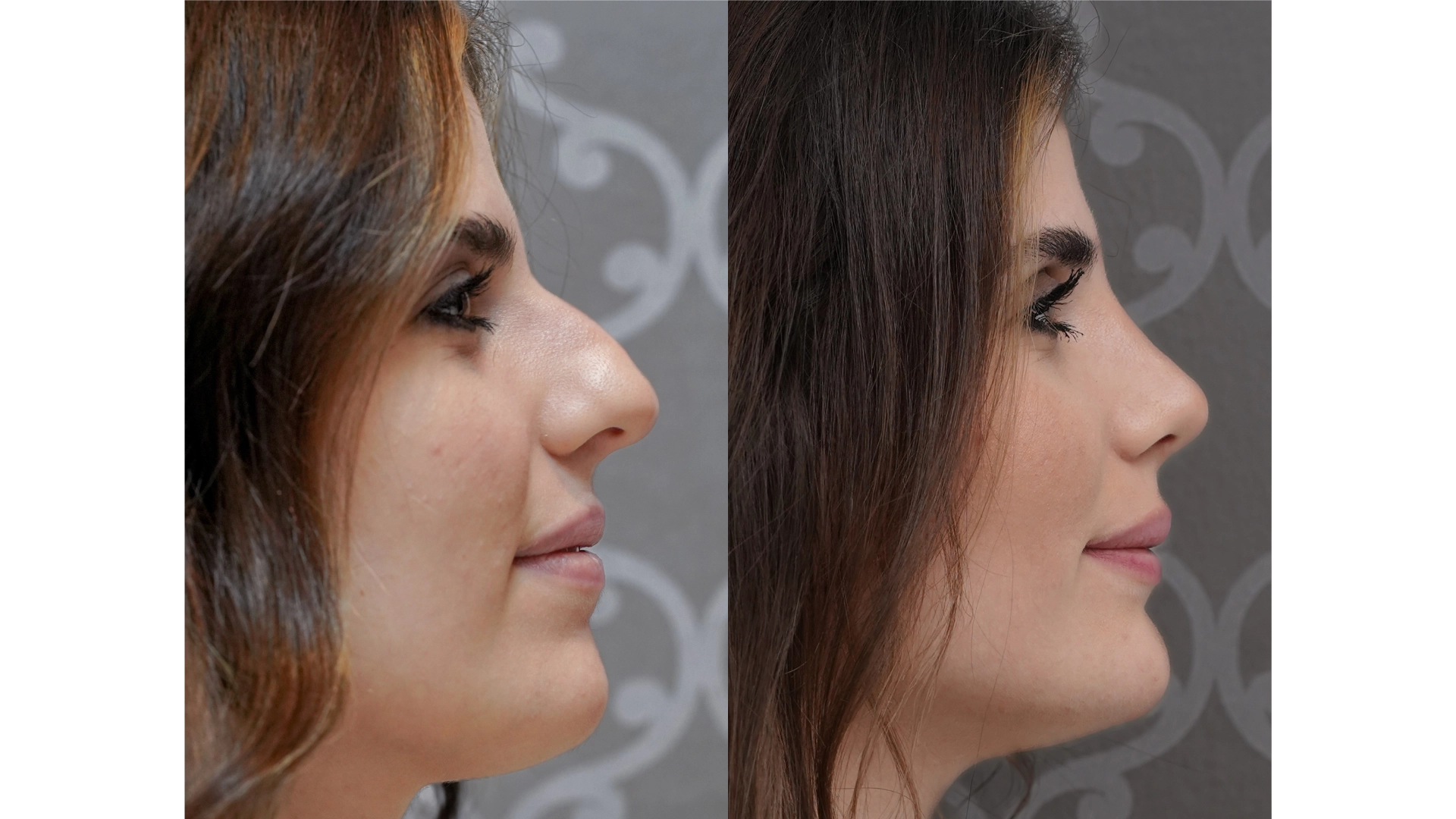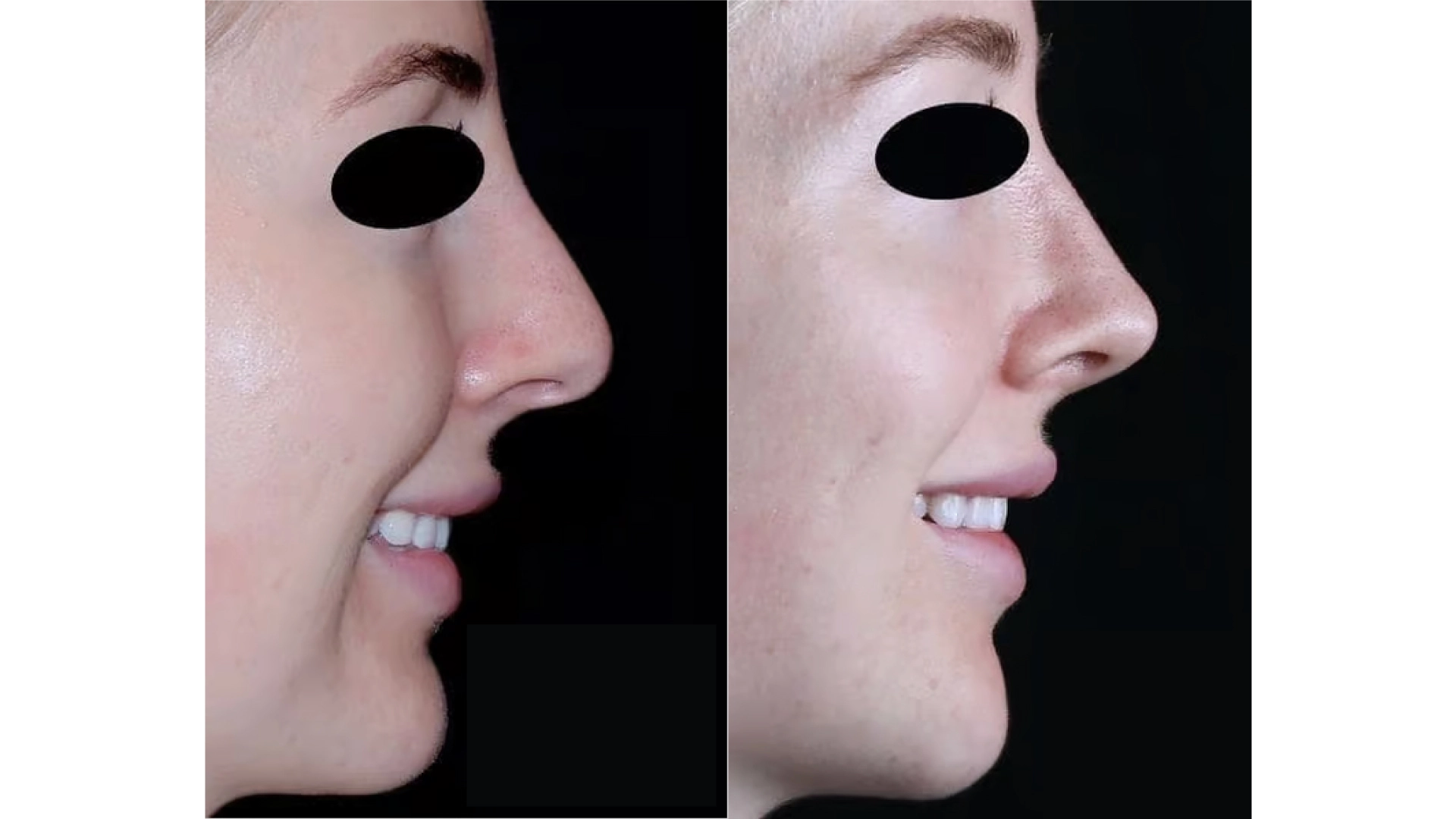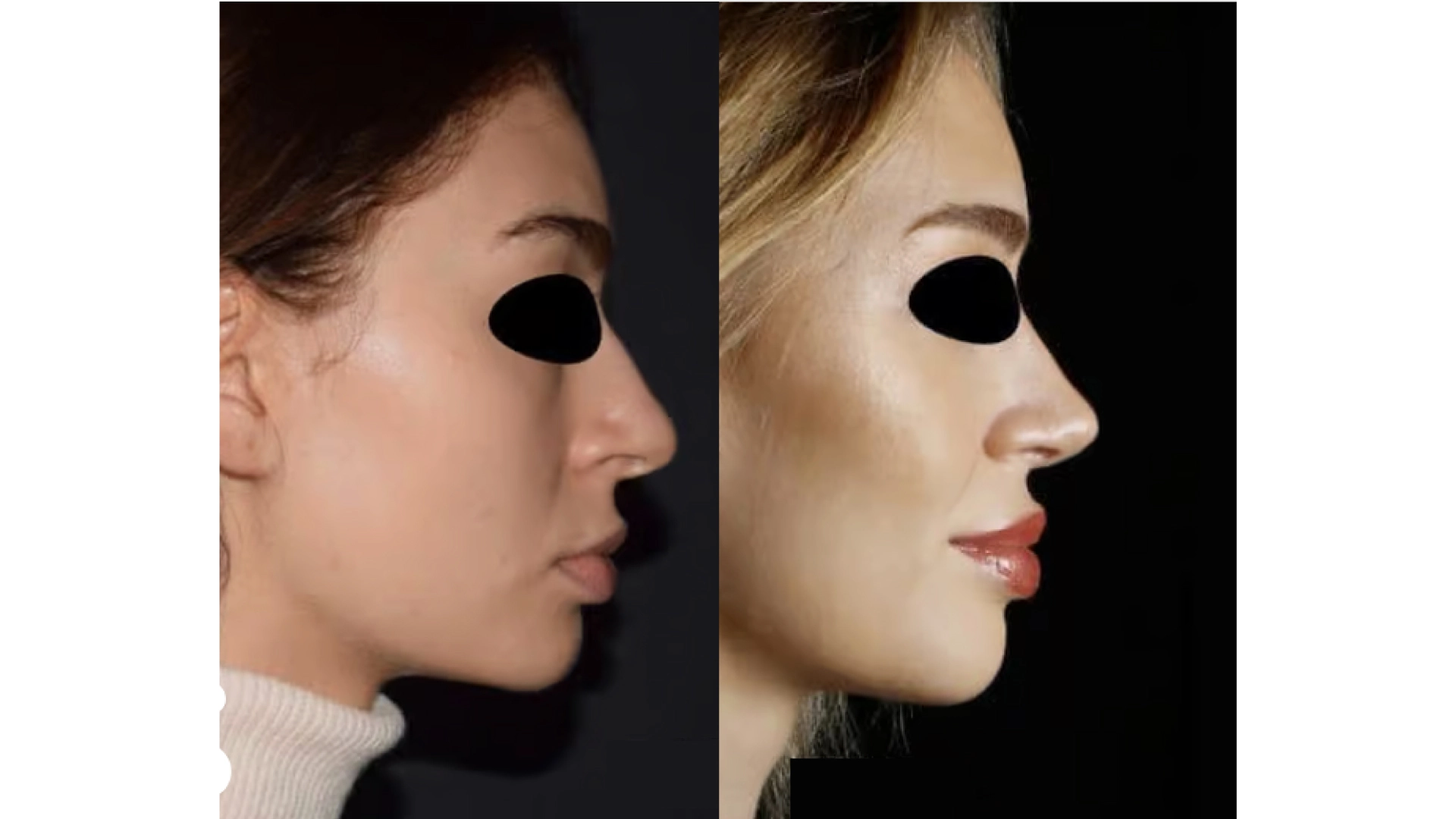Rhinoplasty
Achieve Harmony in Appearance and Function with Rhinoplasty
Rhinoplasty, commonly known as a "nose job," is a surgical procedure aimed at reshaping or reconstructing the nose to achieve aesthetic improvements and functional enhancements. From correcting nasal asymmetry, reducing or increasing the size of the nose, refining the nasal tip, to straightening a crooked nose, the procedure offers comprehensive solutions to enhance facial appearance. Furthermore, rhinoplasty can address medical issues such as deviated septum or nasal valve collapse, improving nasal airflow and overall breathing.
To attain your desired results, there are several gentle rhinoplasty techniques available. Tailored to your specific facial needs, the most suitable technique will effectively sculpt your nose and ensure long-lasting outcomes.
Types of Rhinoplasty
- Open vs Closed Rhinoplasty: Open rhinoplasty involves an incision across the columella, providing better visibility for complex cases, while closed rhinoplasty utilizes incisions inside the nostrils, resulting in hidden scars and less invasive procedures.
- Dorsal Preservation vs Structural Rhinoplasty: Dorsal preservation rhinoplasty aims to maintain the nasal bridge's natural anatomy, minimizing trauma to surrounding tissues, whereas structural rhinoplasty involves altering the nasal structure to achieve desired aesthetic and functional improvements.
- Teo Strut vs Septum Extension Graft: The Teo strut is a technique utilizing a strut graft to support the nasal tip and prevent drooping, while a septum extension graft extends the nasal septum to enhance tip projection and stability, both crucial in achieving desired nasal aesthetics and function.
In conclusion, rhinoplasty is a versatile procedure offering both aesthetic and functional benefits. By understanding its purposes, benefits, and various techniques, individuals can make informed decisions to achieve their desired nasal appearance and function. However, it's essential to consult with a qualified plastic surgeon to determine the most suitable approach based on individual needs and goals.



